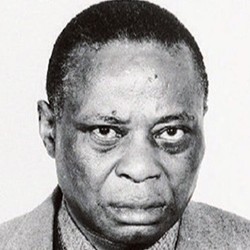
1907 - 1962
Arthur Lucas
Summary
Name:
Years Active:
1961Birth:
December 18, 1907Status:
ExecutedClass:
MurdererVictims:
2Method:
ShootingDeath:
December 11, 1962Nationality:
Canada
1907 - 1962
Arthur Lucas
Summary: Murderer
Name:
Arthur LucasStatus:
ExecutedVictims:
2Method:
ShootingNationality:
CanadaBirth:
December 18, 1907Death:
December 11, 1962Years Active:
1961bio
Arthur Lucas was born on December 18, 1907, in the U.S. state of Georgia. Very little is documented about his early childhood or family life, but as he reached adulthood, Lucas became deeply entangled in the criminal underworld. His criminal record was extensive and included convictions for armed robbery, mail fraud, and pimping. By the time he crossed into Canada in 1961, he had become a career criminal with connections to organized crime and drug trafficking networks between Detroit and Toronto.
Although authorities described Lucas as having "dull normal intelligence," he was known for being street-smart and resourceful. His ability to operate across borders and blend into criminal environments made him a useful figure for other criminal elements. Still, he had no known history of murder prior to the events in Toronto, and there’s no evidence that he had been violent in his earlier criminal ventures beyond armed robbery. He was known to the U.S. federal authorities, though not considered a major threat, and was watched for his association with known drug traffickers.
Despite his criminal record, Lucas was not a man who tried to hide. In fact, one of the strangest parts of the case against him was that he had registered at the hotel in Toronto under his real name and correct home address, an odd move for someone supposedly planning a double homicide.
murder story
On November 17, 1961, a brutal double murder took place at a hotel in Toronto, Canada. The victims were Therland Crater, a 44-year-old drug dealer and police informant from Detroit, and Carolyn Ann Newman, his 20-year-old common-law wife. Crater was found shot four times, while Newman was nearly decapitated—a particularly gruesome detail that shocked investigators.
Arthur Lucas was accused and later convicted of the capital murder of Crater. He was never tried for Newman's killing, although investigators strongly believed he committed both murders. The killings occurred just months after Canada had amended its criminal code to distinguish between capital and non-capital murder. Lucas's charge fell under capital murder due to its premeditated nature, making him eligible for the death penalty.
The evidence against Lucas was largely circumstantial but included several troubling elements: a ring belonging to him was found in a pool of Carolyn Newman's blood, and when arrested, Lucas had gunpowder residue on his hand and blood under his fingernail. There were also bloodstains in the car Lucas had used to travel to Toronto—blood later matched to the victims. The car itself was reportedly owned by Saunders, the very drug dealer Crater was preparing to testify against, which added another layer of suspicion and motive.
Despite this, doubts lingered about the strength of the case. A 1963 investigation by Canadian journalist Betty Lee raised questions about the fairness of the trial. She noted that Lucas had no blood on his clothing, and the prosecution had leaned heavily on the testimony of Morris Thomas, a drug addict and convicted dealer, whose reliability was questionable. The defense highlighted that Lucas's behavior—such as registering under his real name—was not consistent with someone planning a calculated murder.
Lucas's execution came at a historic moment. On December 11, 1962, he and fellow inmate Ronald Turpin were hanged at Toronto’s Don Jail, becoming the last two individuals ever executed in Canada. The procedure itself was botched. According to Chaplain Cyril Everitt, Lucas’s head was nearly torn from his body due to a miscalculation of his weight by the hangman. His death was brutal, and his story left a mark on Canada’s legal and moral conscience.
In the years following the execution, Canada began re-evaluating the death penalty. In 1976, capital punishment for murder was officially removed from the Canadian Criminal Code. The final nail in the coffin came in 1998, when even military executions were outlawed.
Before his death, Lucas reportedly confessed to Chaplain Everitt that although he did not commit these murders, he had "done many other terrible things" in his life and believed the law was simply catching up with him. Whether this was an admission of guilt, a form of resignation, or a final attempt to clear his conscience remains one of the enduring mysteries of Canada's last legal execution.